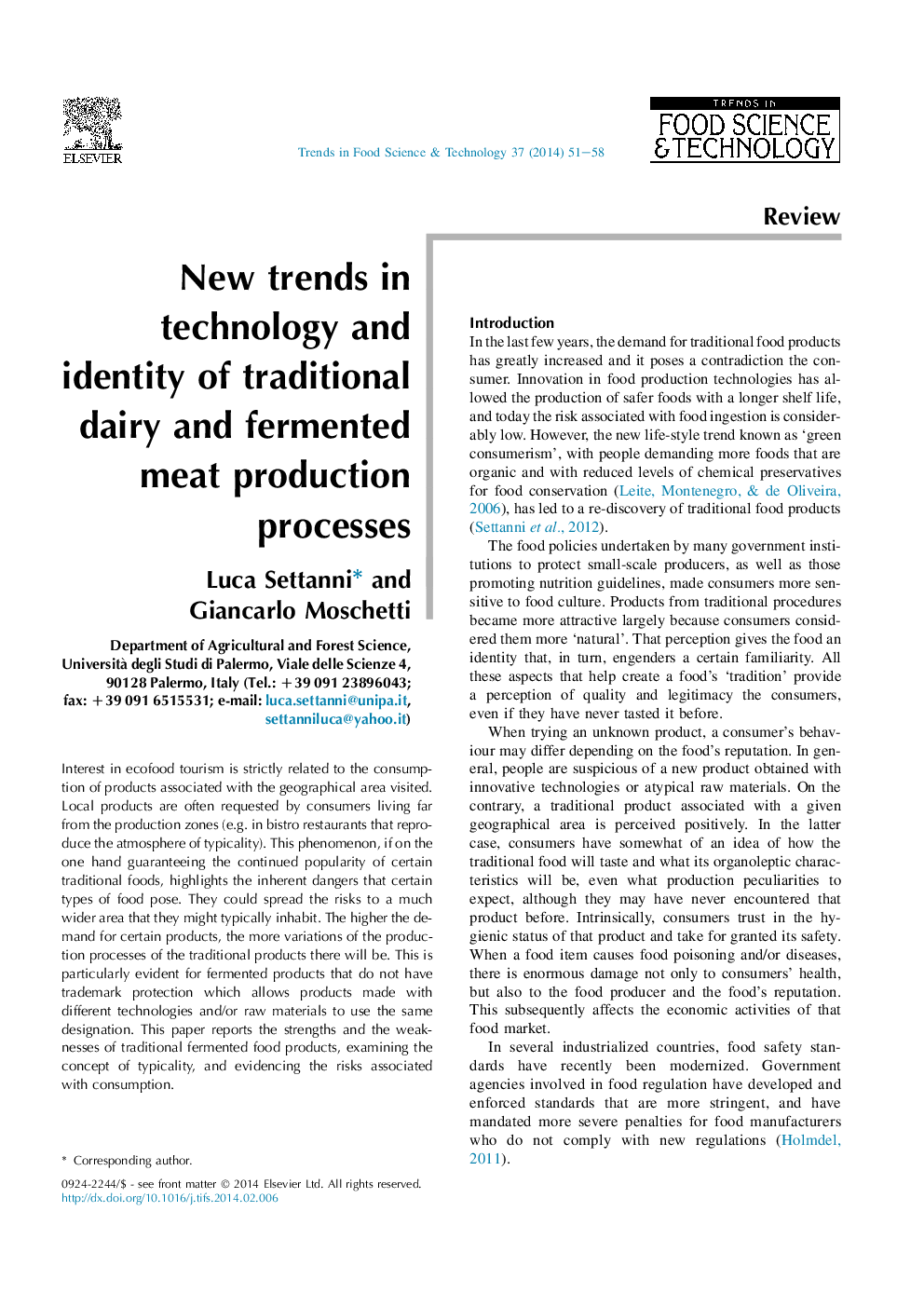| Article ID | Journal | Published Year | Pages | File Type |
|---|---|---|---|---|
| 2098705 | Trends in Food Science & Technology | 2014 | 8 Pages |
•The perceived quality exerts a positive effect on consumer choice.•Process innovations determine added value for many traditional food products.•Raw material, equipment and environmental microorganisms define the typicality.•The safety of traditional fermented foods is strongly influenced by the raw materials.
Interest in ecofood tourism is strictly related to the consumption of products associated with the geographical area visited. Local products are often requested by consumers living far from the production zones (e.g. in bistro restaurants that reproduce the atmosphere of typicality). This phenomenon, if on the one hand guaranteeing the continued popularity of certain traditional foods, highlights the inherent dangers that certain types of food pose. They could spread the risks to a much wider area that they might typically inhabit. The higher the demand for certain products, the more variations of the production processes of the traditional products there will be. This is particularly evident for fermented products that do not have trademark protection which allows products made with different technologies and/or raw materials to use the same designation. This paper reports the strengths and the weaknesses of traditional fermented food products, examining the concept of typicality, and evidencing the risks associated with consumption.
